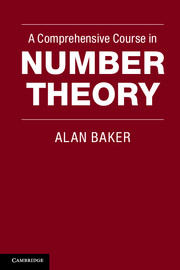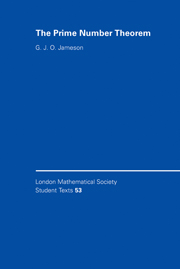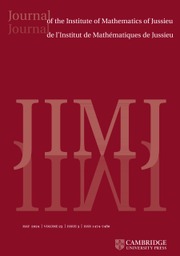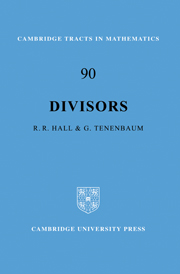Introduction to Analytic and Probabilistic Number Theory
This is a self-contained introduction to analytic methods in number theory, assuming on the part of the reader only what is typically learned in a standard undergraduate degree course. It offers to students and those beginning research a systematic and consistent account of the subject but will also be a convenient resource and reference for more experienced mathematicians. These aspects are aided by the inclusion at the end of each chapter of a section of bibliographic notes and detailed exercises. Professor Tenenbaum has emphasised methods rather than results, with the consequence that readers should be able to tackle more advanced material than is included here. Moreover, he has been able to cover developments on many new or unpublished topics such as: the Selberg–Delange method; a version of the Ikehara–Ingham Tauberian theorem; and a detailed exposition of the arithmetical use of the saddle-point method.
- The book requires very few prerequisites
- Useful for a large range of audiences, from undergraduate students to professional researchers
- Deals with some material that has been very rarely exposed in books
Reviews & endorsements
'This is an excellent source for a poostgraduate course in analytic number theory … many of the proofs are recent descoveries and reflect modern trends, and the more advanced topics are based on the author's own (very successful) research.' Mathematika
'It contains clear and well written text, and enough exercises. … I can recommend this book for students, researchers and professors, for studying and teaching.' MAA Reviews
Product details
July 1995Hardback
9780521412612
468 pages
235 × 156 × 29 mm
0.78kg
5 b/w illus. 50 exercises
Unavailable - out of print
Table of Contents
- Foreword
- Notation
- Part I. Elementary Methods: Some tools from real analysis
- 1. Prime numbers
- 2. Arithmetic functions
- 3. Average orders
- 4. Sieve methods
- 5. Extremal orders
- 6. The method of van der Corput
- Part II. Methods of Complex Analysis:
- 1. Generating functions: Dirichlet series
- 2. Summation formulae
- 3. The Riemann zeta function
- 4. The Prime Number Theorem and the Riemann Hypothesis
- 5. The Selberg–Delange method
- 6. Two arithmetic applications
- 7. Tauberian theorems
- 8. Prime numbers in arithmetic progressions
- Part III. Probabilistic Methods:
- 1. Densities
- 2. Limiting distribution of arithmetic functions
- 3. Normal order
- 4. Distribution of additive functions and mean values of multiplicative functions
- 5. Integers free of large prime factors. The saddle-point method
- 6. Integers free of small prime factors
- Bibliography
- Index.










